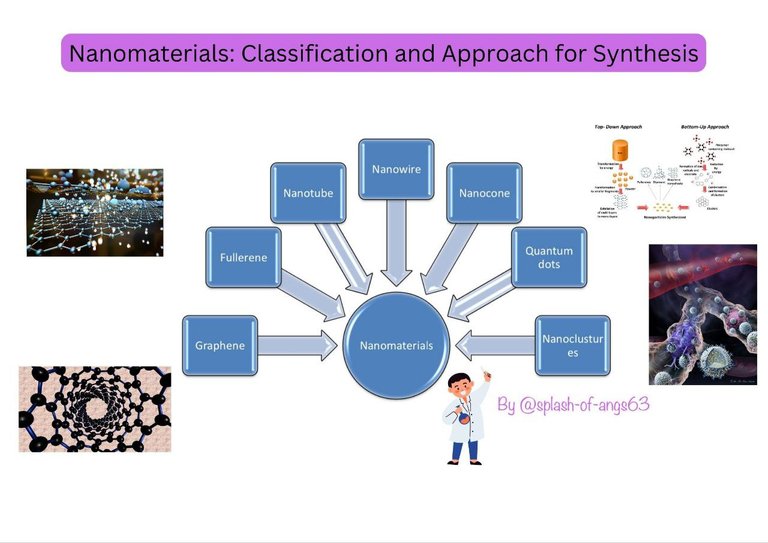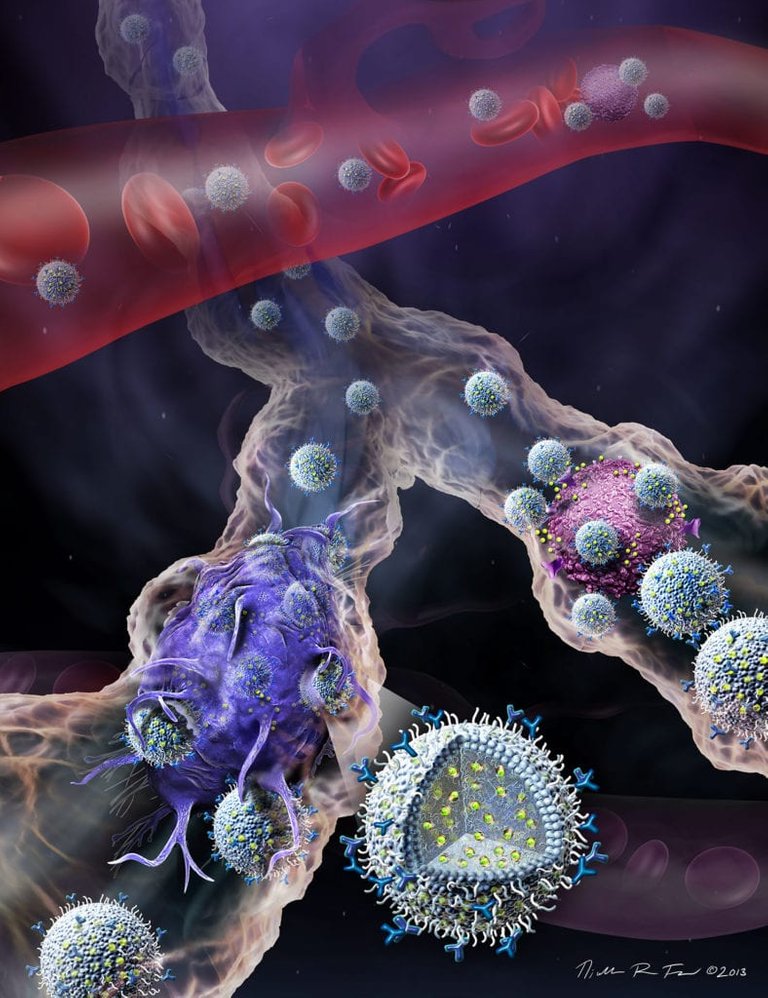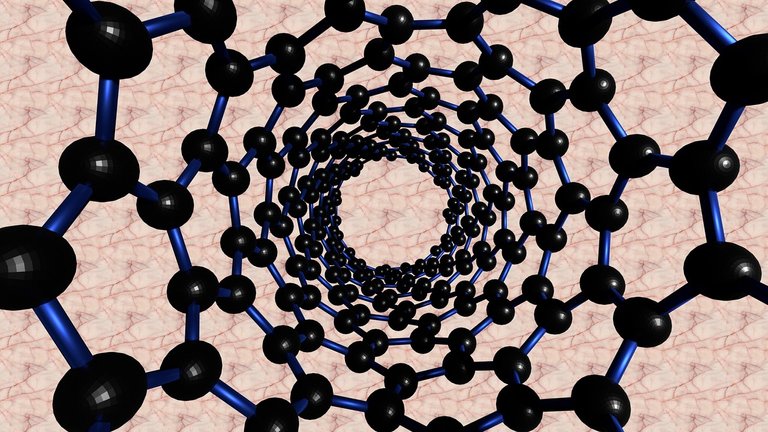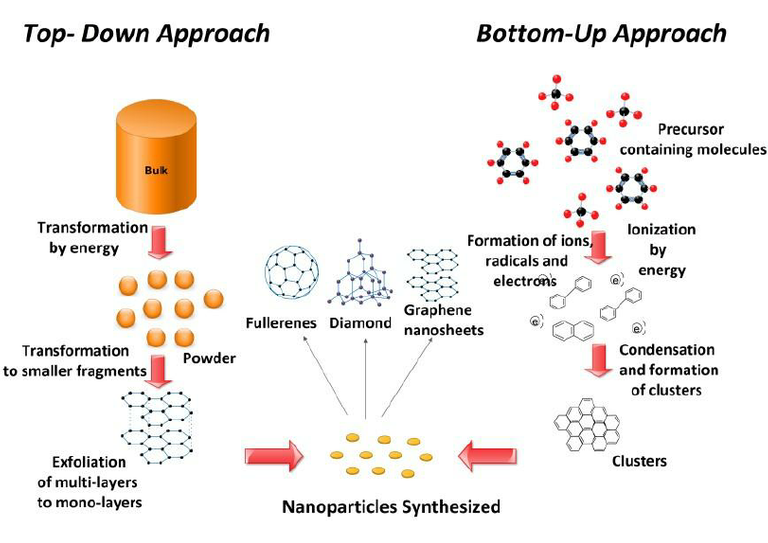Nanomaterials : Classification and Approach for Synthesis |ChemFam #06|
Nanotechnology deals with the study of manipulating matter on an atomic scale. It refers to the constructing and engineering of the functional systems at very micro level or at atomic level. Generally nanotechnology deals with developing materials, devices or other structures that possess dimension of 1 to 100 nanometre. The emergence of nanotechnology began with the invention of Scanning Tunneling Microscope in the year 1981 and with the discovery of fullerene in 1985. Nanoparticles can display properties which are significantly different from the bulk material. For example, a foil of silver does not react with dilute HCl but silver nanoparticle rapidly reacts with dilute HCl.

Nanomaterials are cornerstones of nanoscience and nanotechnology. The usage of nanomaterials are enormous as energy storage devices such as fuel cells, detection of threats in defense, navy, drug delivery and water purification. Nanoparticles have a high surface to volume ratio. At this quantum levels the mechanical, electrical, optical, magnetic and catalytic properties of solids are significantly altered with the reduction in size in the range of nanometres.
According to Siegel, based on the number of dimensions nanomaterials are classified as Zero dimensional (0D),One dimensional (1D), Two dimensional (2D) and Three dimensional (3D) nanomaterials.
(i)Zero dimensional nanomaterials: In zero dimensional class of nanomaterials, all dimensions of space i.e x, y and z are at nanoscale. This means that no dimensions are greater than 100 nm range. This model includes nanoclusters and nanospheres.

(ii)One-dimensional nanomaterials: In one dimensional class of nanomaterials, only the two dimensions x and y are at nanoscale and the third dimension is outside the nanoscale. It leads to needle shaped nanomaterials. It basically includes nanofibres, nanowires and nanotubes.

(iii)Two dimensional nanomaterials: In this class of nanoparticles, only one dimension (such as x) is at nanoscale and the other two are outside the nanoscale. This includes nanofilms, nanolayers and nanocoatings with the thickness of nanometres.

(iv)Three dimensional nanomaterials: These nanomaterials are not confined to the conventional nanoscale in any dimension. These materials have three arbitrary dimensions above 100 nm range. It includes dispersions of nanoparticles, bundles of nanowires and nanotubes in which all other dimensional structural elements are in close contact with each other and forms interfaces.
| Class of Nanomaterials | Size | Examples |
|---|---|---|
| Zero dimension | < 100 nm | Nanospheres and nanoclusters |
| One dimension | < 100 nm | Nanofibres, nanotubes and nanowires |
| Two dimension | < 100 nm | Nanofilms, nanolayers and nanocoatings |
| Three dimension | > 100 nm | Quantum dots, bundles of nanowires and nanotubes |
On further studies, nanomaterials are again divided into 4 more categories for easy understandings of their origins. These are —
(i)Carbon based materials: These are composed of carbon. They take the shape of hollow spheres or ellipsoids and are so referred as fullerenes or cylindrical forms are referred as nanotubes.
(ii)Metal based materials: These includes quantum dots, nanogold, nanosilver and metal oxides like TiO2
(iii)Dendrimers: Dendrimers are repetitively branched molecules. Dendrimers are used in molecular recognition, nanosensing, light harvesting and drug delivery.
(iv)Composites: Composites are combination of nanoparticles with other nanoparticles or with larger, bulk-type materials.
There are two general approaches for the synthesis of nanomaterials —
A) Top-down approach: The top down approach involves the breaking down of the bulk material into nanosized structures or particles. This technique is an extension of those that have been used for producing micron sized particles. Top down approaches are inherently simpler and depend either on removal or division of bulk material or on miniaturization of bulk fabrication processes to produce the desired structure with appropriate properties. The biggest problem that lies with the top down approach is the imperfection of surface structure. For example, nanowires made by lithography are not smooth and may contain a lot of impurities and structural defects on its surface. Examples of such techniques are high energy wet ball mining, electron beam lithography, aerosol spray etc.
B) Bottom-up approach: The alternating approach which has the potential of creating less waste and hence the more economical is the bottom up approach for synthesis of nanomaterials. Bottom-up approach refers to the build up of a material from the bottom: atom by atom, molecule by molecule or cluster by cluster. Many of these techniques are still under development or are just beginning to be used for commercial production of nanopowders. Organometallic chemical route, reverse micelle route, sol-gel synthesis, colloidal precipitation and electrodeposition are some of the well known bottom up techniques reported for the preparation of luminescent nanoparticles.

| Techniques | Information acquired |
|---|---|
| Scanning Electron Microscopy (SEM) with Energy-dispersive X-ray spectroscopy | Surface topography (up to 10nm) and composition |
| Transmission Electron Microscopy (TEM) | Surface morphology (up to 0.2nm) |
| FT-Raman Spectra | Distinguish single walled carbon nanotubes and multi walled carbon nanotubes |
| X-ray photoelectron spectroscopy | Electronic state of the element |
| Photoluminescence Spectra | CNT chirality or Asymmetry determination |
| Atomic Force Microscopy | Identification of individual surface atoms |
| Particle Size Analyzer | Particle size distribution |
Group VIB metal halides like CrCl3, MoCl3, WCl4 can be reduced into their corresponding metals by using NaBEt3H (sodium triethoxy boron hydride) with toluene as the solvent at room temperature.

Nano structured materials by ScienceDirect
Top-Down and Bottom up Approach
Nanotechemistry: a chemical approach to nanomaterials
Review on Nanomaterials: Synthesis and Applications
Azadirachtin: Isolation, Extraction and Mechanism of Action |ChemFam #05|
Woodward-Fieser Rules for Calculating λmax |ChemFam #04|
Chemistry in ancient India |ChemFam #03|
How do soaps clean the dirt? |ChemFam #02|
What is anti egg white injury factor? |ChemFam #01|
PS The thumbnail image is created by me using
canva.com and the chemical reactions are written via KingDraw app

Congratulations @splash-of-angs63! You have completed the following achievement on the Hive blockchain And have been rewarded with New badge(s)
Your next target is to reach 2000 upvotes.
You can view your badges on your board and compare yourself to others in the Ranking
If you no longer want to receive notifications, reply to this comment with the word
STOPCheck out our last posts:
Support the HiveBuzz project. Vote for our proposal!
https://twitter.com/1028581054087553024/status/1631354077874638849
The rewards earned on this comment will go directly to the people sharing the post on Twitter as long as they are registered with @poshtoken. Sign up at https://hiveposh.com.
Thanks for your contribution to the STEMsocial community. Feel free to join us on discord to get to know the rest of us!
Please consider delegating to the @stemsocial account (85% of the curation rewards are returned).
Thanks for including @stemsocial as a beneficiary, which gives you stronger support.